LD DDQ10-LD DDQ12-LD DDQSUB212 – Giving the speaker a digital facelift – Test report by monitor.dk
The new active processor-controlled PA-speakers in the DDQ series are a breakthrough for LD Systems, with the new series belonging to the important class of small PA-systems that are able to perform in front of audiences of up to a couple of hundred people. In this test, Monitor Pro will be listening to the DDQ10 and DDQ12 speakers, both as standalone units and together with the DDQSUB212 subwoofer. 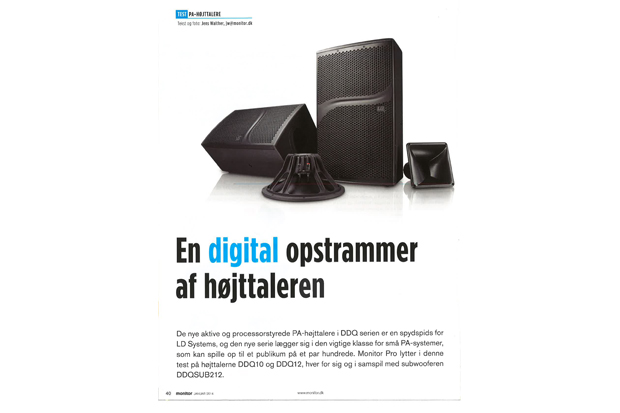
LD Systems, whose products are distributed and marketed by Adam Hall, is trying to move one step up the ladder in the hierarchy of PA speakers. The intent here is not to snap at the heels of the very best and most expensive PA speaker manufacturers. Rather, LD Systems want to continue selling speakers at affordable prices and to cater to the large segment of semi-professional customers, rather than a small number of professionals. But LD Systems’ ambition to develop a great-sounding PA speaker at a reasonable price is a big one and the DDQ series is proof of this.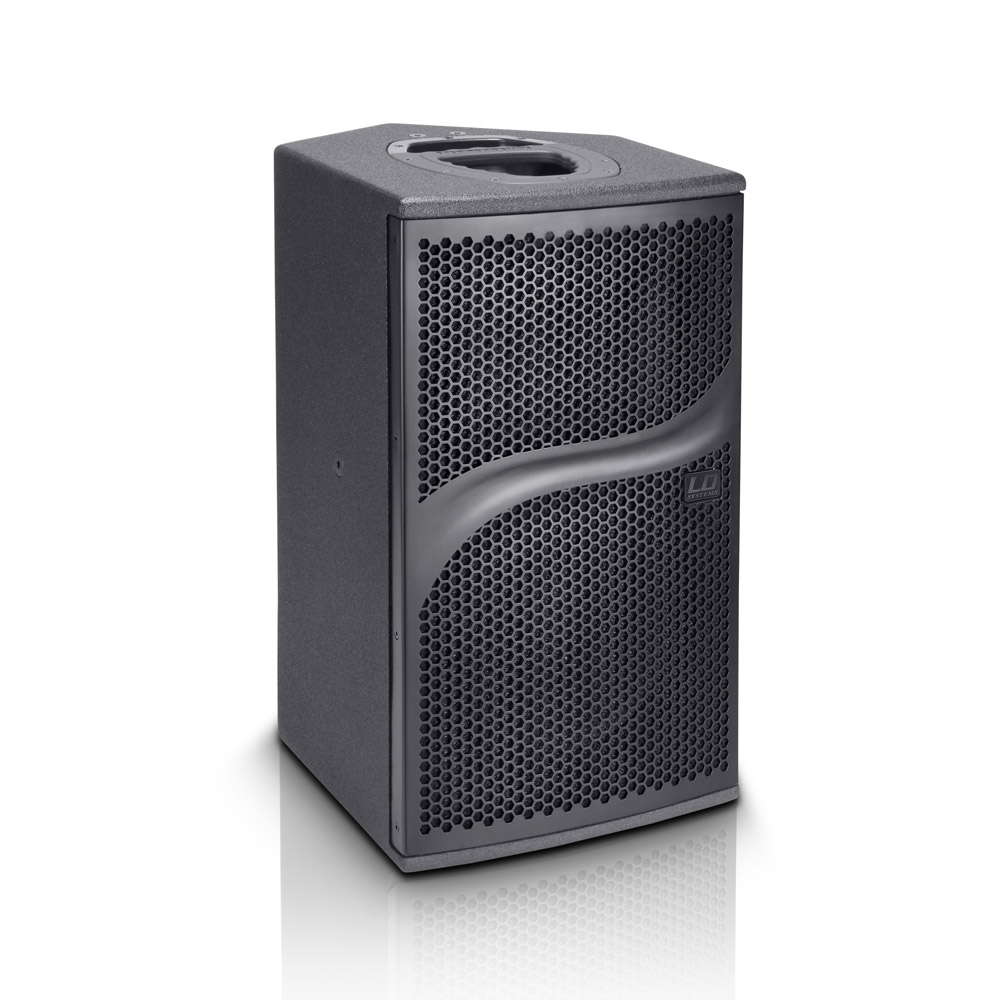
Units, cabinet and processing
DDQ 10 are 12 are made of plywood and are very light considering that each speaker is comprised of two units, two amplifiers and the cabinet itself with sockets, handles and fittings. With weights of 15.5 and 17 kg respectively, they are definitely manageable. There is a large handle on the side of the speaker, so it is easy to move around. The speaker is assymmetrical in shape, enabling it to be used upright as a PA speaker or placed facing upwards on the floor as a monitor. If the speaker is to be used as a monitor, the tweeter horn must be rotated 90 degrees, This is perfectly doable done by unscrewing the metal front grille and then rotating it but it is nevertheless so cumbersome that you should make a decision about which primary function the DDQ speaker will serve in the future, and make it fast. There is a hole in the base for securing the speaker to a pillar or stand. A bracket in this hole ensures that the speaker can be tilted to just the right angle, a great function that is very useful. A bracket is also included for hanging the speaker in a U-frame.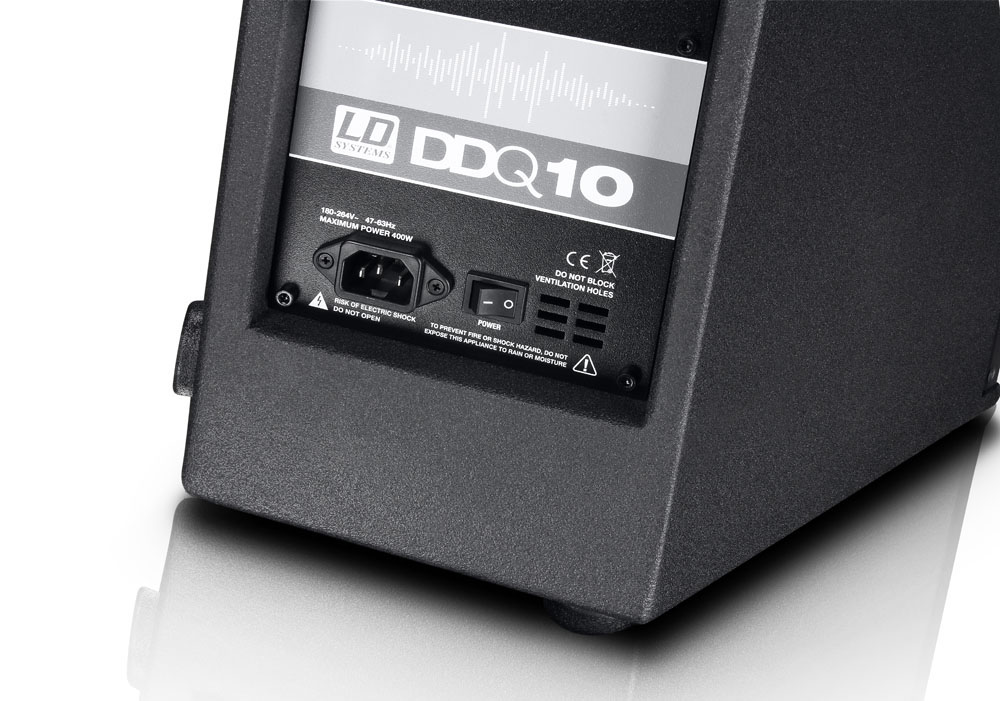
“The DDQ series can play loud and sound great. Cabinets and finish are of a good standard and we recommend that you give them a listen when investing in a new PA system.”
Both DDQ 10 and 12 contain two units, the same BMS 4524 compression driver with 1-inch membrane, and a Faital 10 or 12 inch unit, respectively. Both units in the speaker are powered by their own Hypex 400 W power stage, so the DDQ 10 and 12 are fitted with exactly the same parts, with the exception of the size of the bass speaker. the asymmetrical horns in front of the compression driver are, however, slightly different. The dispersion angles are 60 and 50 degrees, respectively. This may be why the treble is slightly different on the two models, which you can read about later in the test. On the rear side of the top speakers are input, input link and sub out, which are all balanced XLR sockets, of course. A 4 dB stepped gain control and two switchers for full/sub and ground lift are the only adjustable features of the speaker.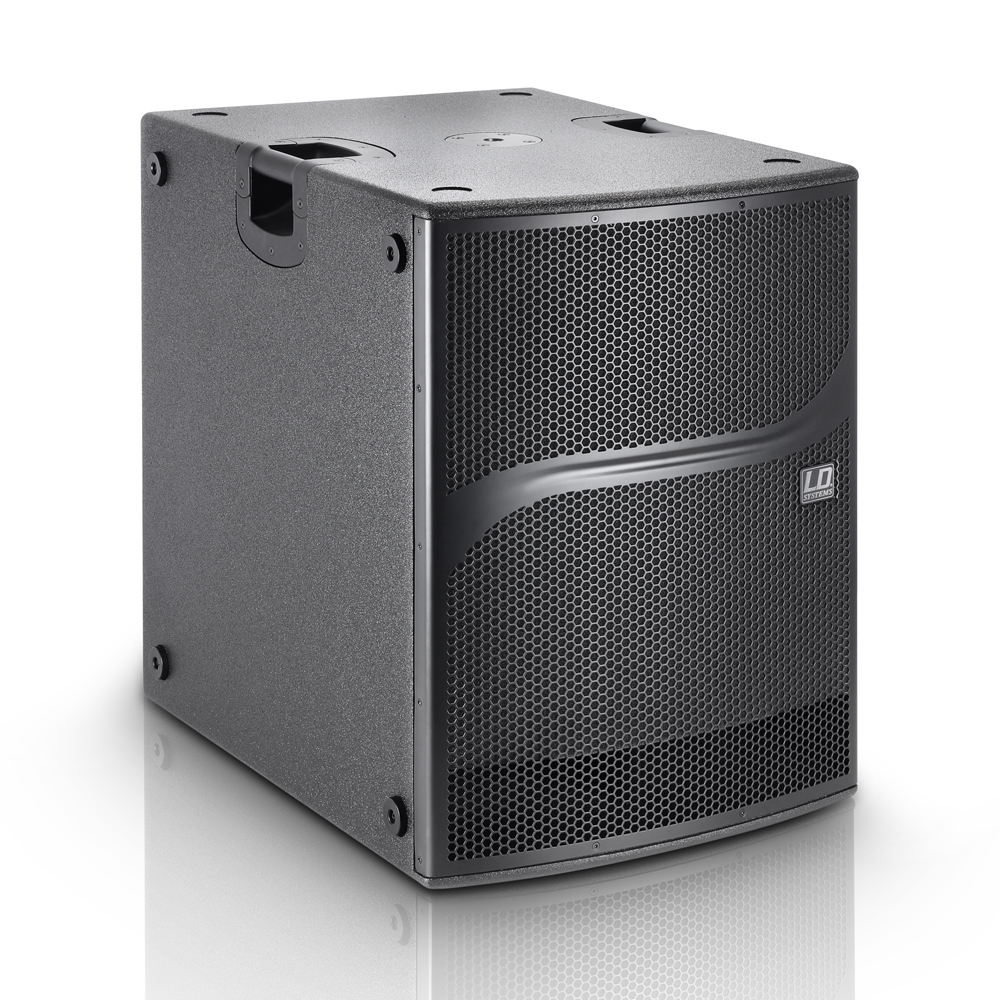
Subwoofer The DDQSUB212 subwoofer contains two 12-inch units from Faital. LD Systems will also soon be launching a subwoofer containing a single 18-inch unit. The sub holds two 700 W power amplifiers and the subwoofer is somewhat heavier at around34.5 kg, but with a bit of effort it can be moved around. The subwoofer can be used upright or sideways. If two subwoofers are to be stacked, an obvious solution would be to place them sideways. The subwoofer panel has two inputs and two link inputs. This is why the subwoofer can also be used as a single monosub with two top cabinets. In this configuration, the two inputs would be merged to mono for the bottom frequencies, with the link outputs retaining the stereo image for the two top cabinets. The panel also has two selectors and a gain button. On the DDQSUB212 however, it is also possible to choose how the DSP control is to function.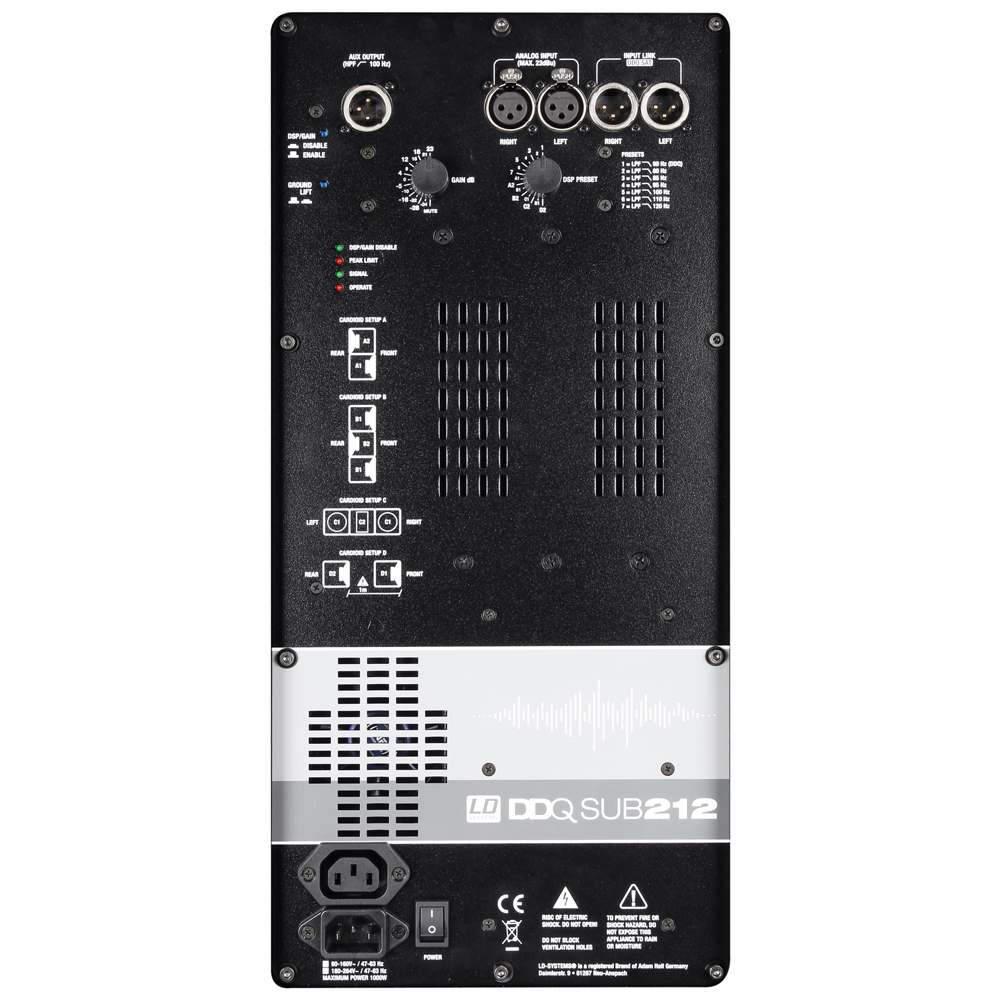
Computerised controller DSP (Digital Signal Processing) control, is widespread in the world of PA speakers. Computerised control is used in loudspeakers because it provides greater control and better performance from the respective units in the speaker. The DSP control found in the DDQ10 and DDQ12 top cabinets has control units for gain, EQ, delay, crossover, fse, “Iook ahead” limiter and an interaction between units and amplification, one of the features of which is to gauge temperature, so as to safeguard the units against burnout. All DSP controls require A/D/A conversion, which is critical. The DDQ speakers use 24 bit/48 kHz conversion and the DSP processing itself is done via a Share processor. Manufacturing these digital circuits is cheap enough, but of course it costs resources during development. DDQ is only the second active speaker series from LD Systems to be DSP controlled. The DDQ10 and 12 have no presets or user control. Everything is configured at the factory and the only configurable feature of the DSP circuit is whether the speaker is to be used full-range or together with a subwoofer. This is determined with a selector that can only be activated using a small screwdriver, pencil or similar. The DDQSUB212, features a range of DSP presets, however. Presets 1-7 offer various crossover frequencies between sub and top cabinets. Crossover frequencies ranging from 80 to 120 Hz can be selected.
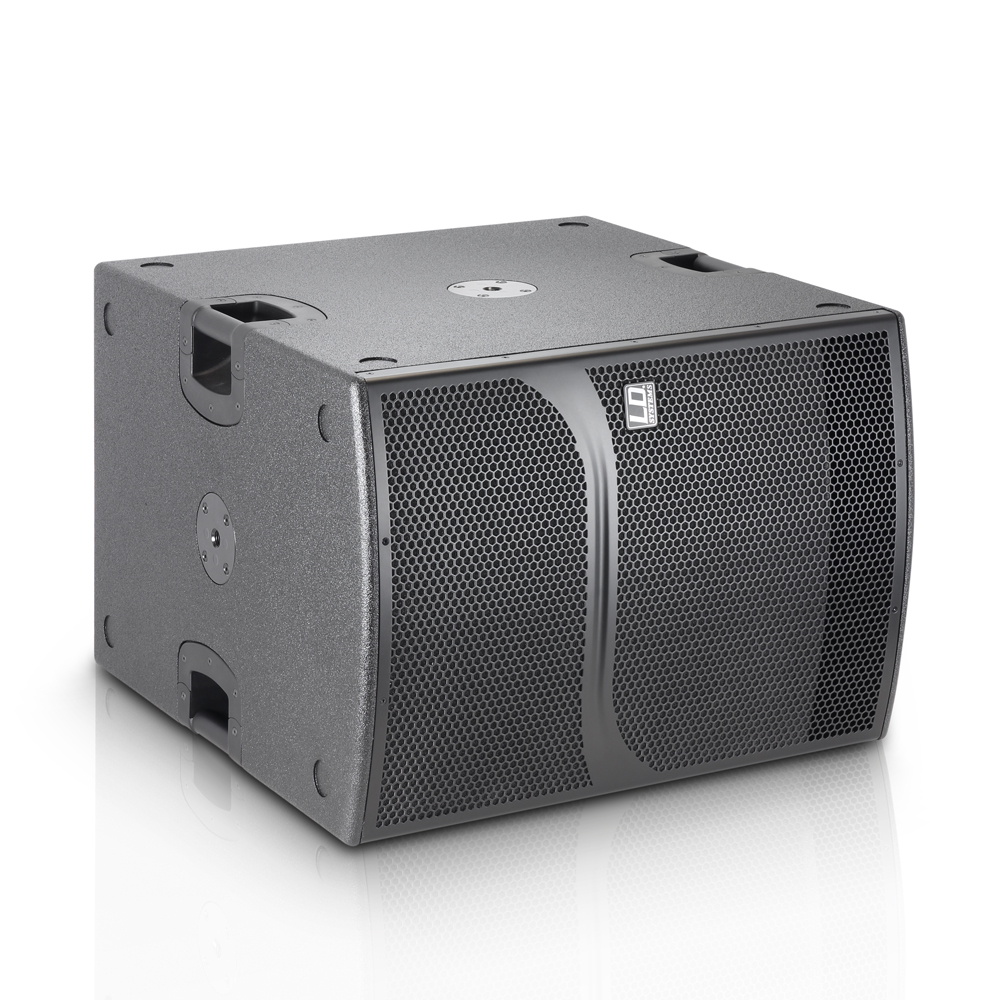
Preset 1, with its crossover set at 90 Hz, is intended to be used together with the DDQ top cabinets. But that’s not all. Very ambitiously, LD Systems have also configured four presets in which two or three subwoofers can be employed in a cardioid system. A cardioid system uses phase and in this way some of the rear output normally found in the bass range is switched off. Deep frequencies from a single speaker have the unfortunate characteristic of behaving like circular waves and are as loud at the rear as at the front. This means, unfortunately, that PA speakers deliver bass at the rear and on the stage. This means bad sound onstage, muddy-sounding bass in the concert hall and a chance of feedback at the very deep frequencies. A cardioid system is expensive to set up because it requires at least one extra subwoofer per side, which is set up to play the opposite way. LD Systems have configured presets for either 2 subwoofers, 3 subwoofers stacked or sideways and also a preset for when two subwoofers are placed one metre apart. We applaud LD Systems for having exploited the potential of DSP so masterfully. Perhaps they are hoping to sell a couple of extra subwoofers too. But even though cardioid systems are becoming more and more widespread, it is unlikely that more than a few potential buyers of DDQ systems will take the step towards an expensive cardioid solution. A cardioid system gives up to a 20 dB reduction to onstage bass levels.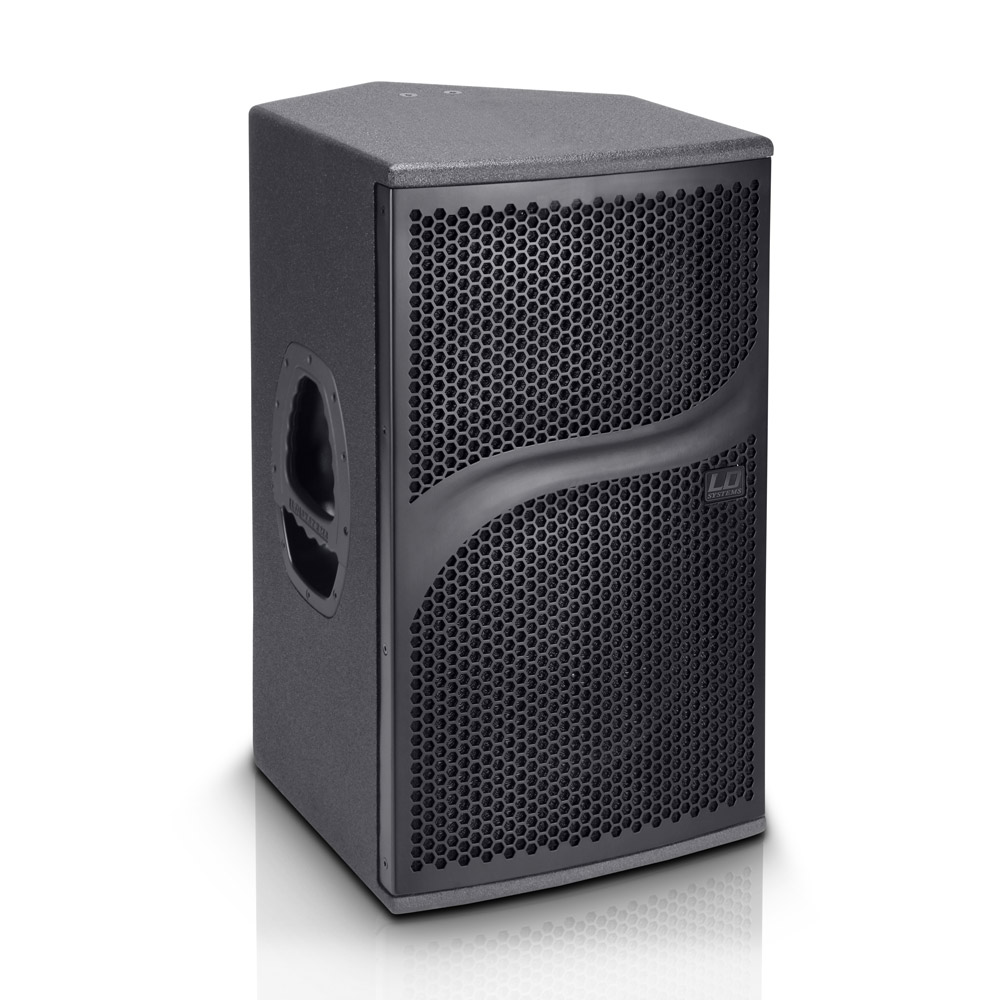
Let’s turn up the volume!! The new LD Systems DDQ series from LD was tested in an approx. 100 m3 room. The two top cabinets were of course tested both as standalone units and together with the subwoofer. For the listening test, a sub was used on each side and in none of the four configurations was there any difficulty in filling the room with sound at levels that were almost unbearably loud. All this, bearing in mind that the peak level indicator behind the speakers never lit up even once. So there is plenty of power in these speakers. All the speakers are fan-cooled but on the DDQ10 and 12 they are inaudible. You could hear the fan in the SUB212 but of course only when there was no sound coming out of the speaker. The two top cabinets were listened to for the first time without a sub. Both speakers have a clear and defined sound in which the instruments in the music mix are clear. The depth of stereo in the soundstage is well balanced and of good quality. The sense of there being two speaker cabinets does not quite disappear in the stereo image as it does with the very best PA speakers, but this would be too much to expect at this price level. The aggressive mid-tone around the 3 kHz range, which is accentuated in many cheaper PA speakers, is far better balanced on these speakers. Speech and vocals remain accentuated but to a lesser degree and a little gentle equalisation ( which you’d always do on a PA speaker anyway), will balance them out even better.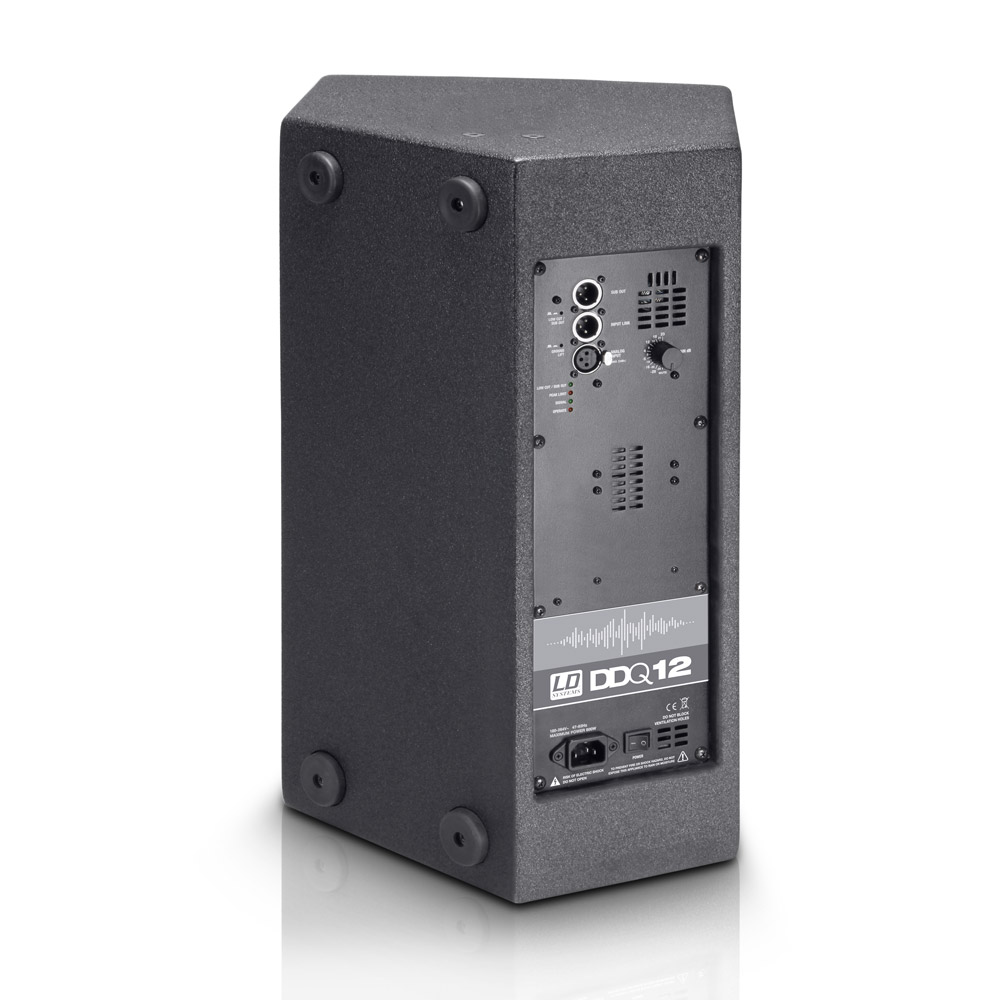
The DDQ12 in particular is somewhat accentuated in the range above 7 kHz and just a couple of dB with a soft shelf EQ fixed these problems. The top-end was not quite as accentuated as with the DDQ10 and even though the two speakers share the same DNA, it seemed as if the best sound quality lay with the DDQ10. It is of course a little thinner at the low end than DDQ12. Neither of the speakers have the deep lows as they fall sharply off around 55-60 Hz, but both the DDQ10 and DDQ12 are perfectly usable without a subwoofer if there is no need to add bass and bass drum to the speaker sound. When both DDQ10 and 12 are forced to play full-range music at very high volume levels, the sound becomes somewhat squashed, especially in the lower middle tones. Once again, this is a characteristic of pretty much all PA systems, regardless of price. The DDQSUB 212 added an octave to the bottom end and the already respectable sound from the top speakers received an upward boost to sound quality, especially when the PA system was playing very loudly. Thanks to the membranes on the SUB212, which are rather small after all, the depth was very precise and transient. The deepest frequencies around 30-35 Hz, which only an 18-inch unit can generate were of course not present. But precisely two 12-inch subwoofers possess qualities that are soon lost with a single bigger membrane. So choosing a subwoofer is always difficult.
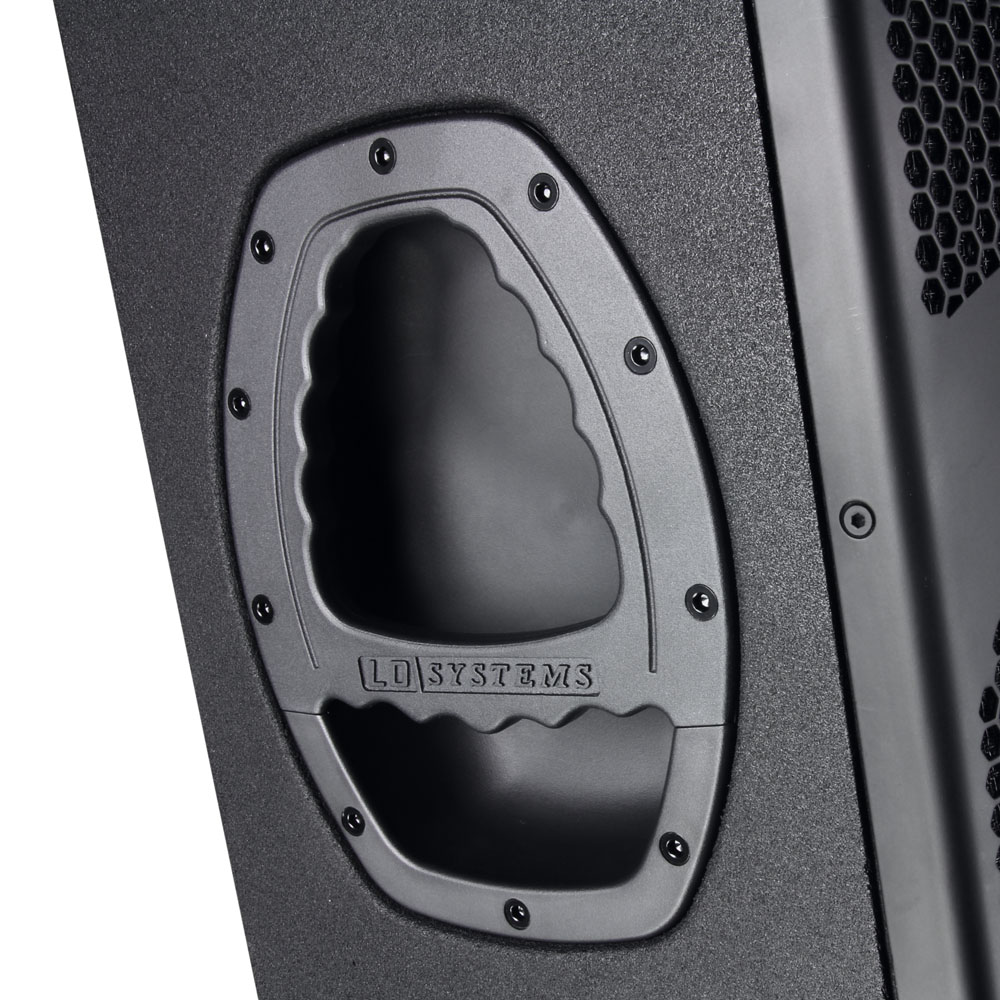
A good attempt LD Systems have made a very strong effort indeed and the result is their best-sounding speaker. Compared with their other models , the new series is somewhat more expensive. But after all, sound quality and price always go hand-in-hand. The DDQ series can play loud and play well. Cabinets and finish are of a good standard and we recommend that you give them a listen when investing in a new PA system.
FACTS: LD Systems DDQ10/12
Plus:
– Works both as PA and monitor speaker
– Easy to use due to DSP controller and integrated amplifiers
– Capable of playing LOUD
– Cardioid system presets in the subwoofer
Minus:
– DDQ10/12 needs a subwoofer if bass instruments are to be amplified
– An equalisation is needed to complete the sound image
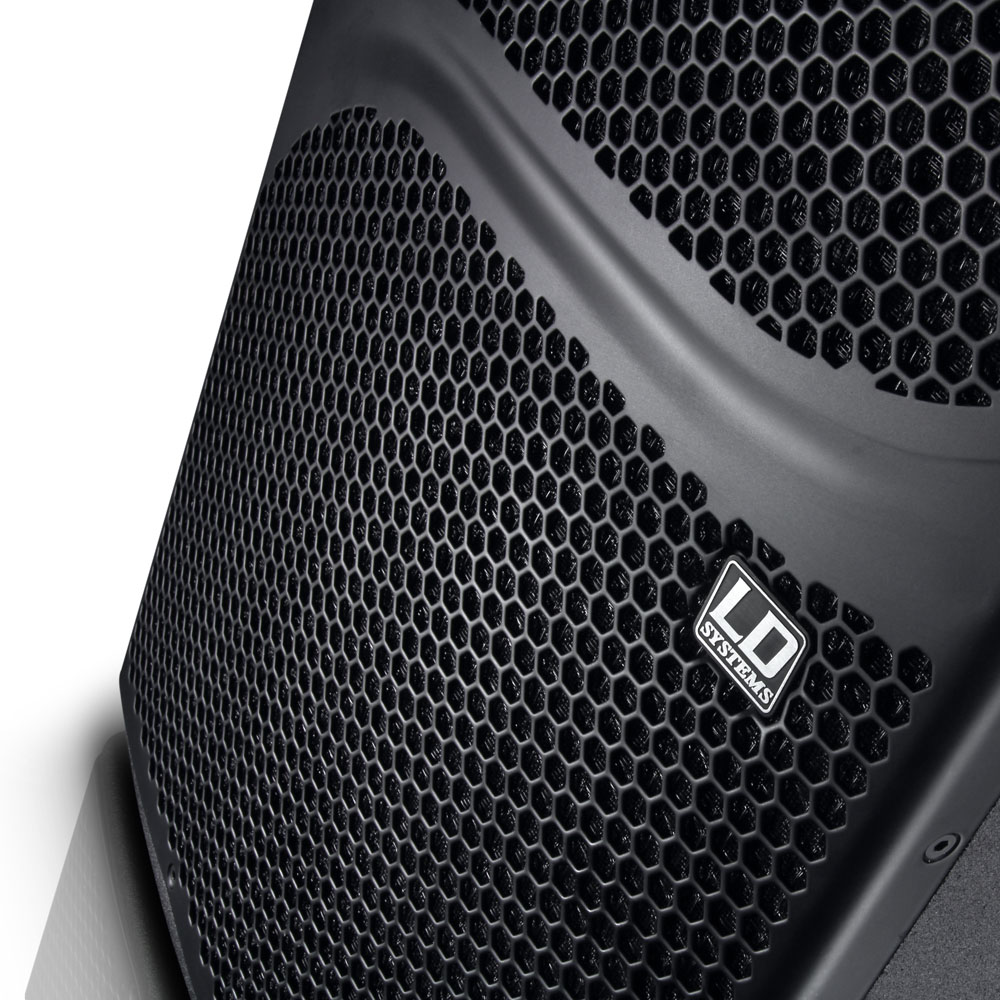
Prices: DDQ10 999,00 € DDQ12 1.199,00 € DDQSUB212 1.699,00 €
For further information about the LD Systems DDQ10, DDQ12 and DDQSUB212, please visit:
http://www.ld-systems.com/en/series/ddq-series/
Author: Jens Walther
Source: www.monitor.dk
Leave a Comment
You must be logged in to post a comment.











